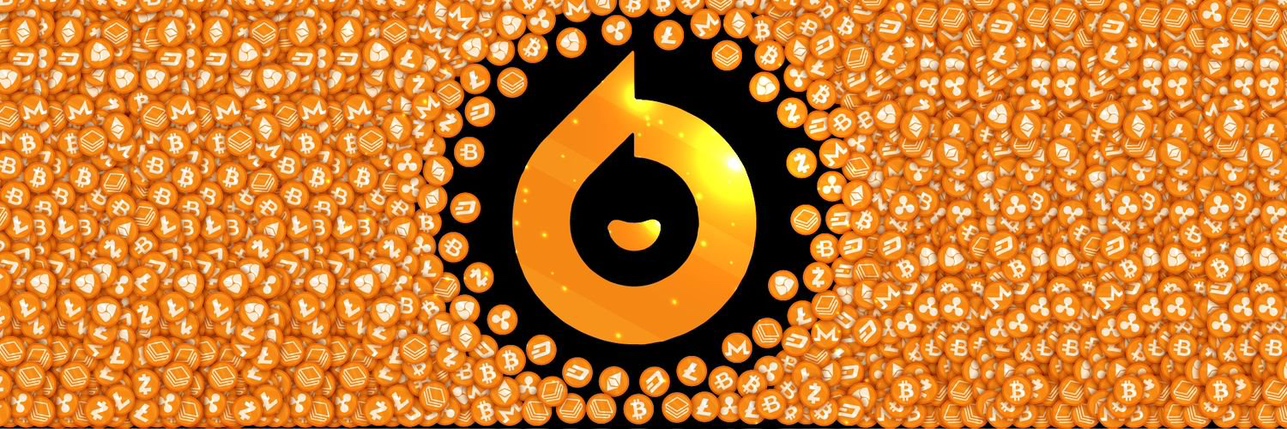
Polygon priceMATIC
Polygon market Info
Live Polygon price today in USD
The cryptocurrency market is buzzing with activity on October 16, 2025, marked by significant price movements, accelerating institutional adoption, evolving regulatory landscapes, and continuous technological advancements. Investor sentiment has shifted to the 'greed' zone, a level not observed in nearly three months, reflecting renewed optimism across the digital asset space. [1]
Bitcoin's Resurgence and Institutional Embrace Bitcoin (BTC) has been a central focus, breaking above $67,000 and leading a broader market rally after a volatile period. [1] Following a dip as low as $64,900, BTC rebounded by 2.54% to reach $67,128, with its one-day trading volume surging by 20% to $49.11 billion. [1] Earlier in October, Bitcoin also achieved a new record price, surging past $125,000. [19] Technical analysis reveals a bullish 'Double Bottom' pattern, potentially setting the stage for a breakout towards the $150,000 mark. [6] Bitcoin exchange-traded funds (ETFs) have seen substantial inflows, with BlackRock's iShares Bitcoin Trust (IBIT) notably surpassing $100 billion in assets under management (AUM), making it the fastest ETF to reach this milestone. [4] This achievement led BlackRock CEO Larry Fink to underscore the growing trend of 'tokenization of all assets'. [4] Further signaling robust institutional acceptance, Morgan Stanley has expanded access to Bitcoin and other crypto funds to all its wealth management clients, including those with Individual Retirement Accounts (IRAs) and 401(k)s. [11] Citigroup is also preparing to launch a comprehensive crypto custody platform by 2026. [11] In a development highlighting the maturation of crypto derivatives, Laser Digital, Nomura Group's digital assets arm, executed its first Bitcoin options trade on GFO-X, a regulated UK derivatives venue. [8] The third quarter of 2025 saw record-breaking activity in crypto futures and options, with combined volume exceeding $900 billion, driven by increased institutional involvement. [16]
Ethereum's Trajectory and DeFi Evolution Ethereum (ETH) has mirrored Bitcoin's positive momentum, with its price increasing by 3.6% over the past 24 hours. [21] Analysts are predicting ETH could reach $5,200, driven by new privacy initiatives within the Ethereum ecosystem, such as the integration of Railgun into its privacy wallet toolkit. [21] The Ethereum Foundation is actively engaging with the Decentralized Finance (DeFi) ecosystem, deploying 2,400 ETH and stablecoins into the DeFi lender Morpho as part of its updated treasury management strategy. [12] However, Ethereum has also experienced a significant institutional withdrawal wave, with over $428 million pulled from ETH-backed ETFs in a single day, leading to a bearish outlook around the $4,000 psychological threshold. [22] The Foundation also issued a reminder for software updates following changes in proof formats introduced by EIP-7549, essential for optimizing transaction efficiency and network reliability. [14]
Altcoin Performance and Broader Market Trends While Bitcoin and Ethereum show strong signals, the altcoin market has presented a mixed bag. Binance-backed BNB saw a 1.41% increase, and Dogecoin (DOGE) rose by 2.07%. [1] Conversely, Solana (SOL) declined by 0.18%, XRP dipped by 0.94%, and Toncoin (TON) dropped by 1.10%. [1] Smaller altcoins like Shiba Inu (SHIB), PEPE, WIF, and BONK also experienced declines. [1] Despite some recent pullbacks, the Q3 2025 report from CME Group highlighted surging demand for regulated crypto exposure, with Solana (SOL) and XRP futures reaching all-time highs, indicating broader institutional and retail interest beyond just Bitcoin and Ethereum. [16] This aligns with an analyst's prediction of a potential 195x altcoin surge by October 2025, driven by historical market cycles and low exchange reserves. [2]
Regulatory Developments and Innovation Globally, regulatory frameworks for digital assets continue to evolve. In the U.S., bipartisan negotiations for a crypto market-structure bill have stalled due to a new Democratic proposal that seeks to classify DeFi front-end participants as 'digital asset intermediaries' under SEC or CFTC oversight. [18] In Europe, the European Banking Authority (EBA) raised concerns about proposed amendments to the Markets in Crypto-Assets (MiCA) regulation, fearing potential liquidity risks. [18] The EBA also released a report addressing money laundering and terrorist financing risks in crypto-asset services. [25] Japan is moving towards banning crypto insider trading, authorizing its Securities and Exchange Surveillance Commission to investigate violations. [26] Meanwhile, the tokenization of real-world assets (RWAs) continues to be a pivotal catalyst for DeFi, with MakerDAO's $1.2 billion investment in U.S. Treasury bonds serving as a prime example of institutional engagement in this sector. [10, 24] New technologies are also emerging, such as Appyea, Inc.'s Techlott, a blockchain engine designed for transparency in gaming and entry into prediction markets. [29]
Today's crypto market showcases a dynamic interplay of bullish price action, deepening institutional integration, ongoing regulatory scrutiny, and continuous innovation shaping the future of decentralized finance.
Now that you know the price of Polygon today, here's what else you can explore:
How to buy crypto?How to sell crypto?What is Polygon (MATIC)What are the prices of similar cryptocurrencies today?Want to get cryptocurrencies instantly?
Buy cryptocurrencies directly with a credit card.Trade various cryptocurrencies on the spot platform for arbitrage.Polygon price prediction
What will the price of MATIC be in 2026?
In 2026, based on a +5% annual growth rate forecast, the price of Polygon(MATIC) is expected to reach $0.00; based on the predicted price for this year, the cumulative return on investment of investing and holding Polygon until the end of 2026 will reach +5%. For more details, check out the Polygon price predictions for 2025, 2026, 2030-2050.What will the price of MATIC be in 2030?
About Polygon (MATIC)
What Is Polygon?
Formerly known as Matic Network, Polygon is a unique protocol and framework designed for constructing and interlinking Ethereum-compatible blockchain networks. It has been skillfully engineered to counter some of the most notable drawbacks of the Ethereum blockchain, such as scalability issues and high transaction fees. With its robust, efficient, and flexible solutions, Polygon is revolutionizing the blockchain realm.
In a world where Ethereum maintains a significant influence over the blockchain industry, Polygon has successfully marked its presence, garnering the attention of developers and users alike. Established in 2017 by three passionate blockchain developers - Jaynti Kanani, Sandeep Nailwal, and Anurag Arjun, Polygon was born out of the shared aspiration to make blockchain technology more accessible and beneficial to all.
The primary goal of Polygon is to metamorphose Ethereum into a multi-chain ecosystem, often referred to as the 'Internet of Blockchains'. The design of Polygon promotes an environment where a multitude of blockchains can operate concurrently, while maintaining the capacity to interact and exchange information amongst themselves. These interconnected networks are known as 'Polygon chains'.
Flexibility is a key distinguishing factor of Polygon. It grants developers the liberty to launch any application, with the freedom to decide on scalability, security, sovereignty, and more. This means Polygon can accommodate multiple applications, each with its unique demands and specifications, thereby expanding the applicability and usability of blockchain technology.
Resources
Whitepaper: https://github.com/maticnetwork/whitepaper/
Official website: https://polygon.technology/
How Does Polygon Work?
At a macro level, the operation of Polygon is anchored on two primary components: The Polygon SDK and the Polygon Networks.
- The Polygon SDK: A flexible, modular, and open-source framework, the Polygon SDK equips developers with the capability to construct efficient and scalable Ethereum-compatible blockchains that can either stand alone or be secured chains. It's designed to cater to diverse types of applications and use-cases, ensuring it remains adaptable to varying developer needs.
- The Polygon Networks: These comprise different chain types, including standalone chains and secured chains. While standalone chains operate independently and are accountable for their own security, secured chains utilize the security of the Ethereum network or a pool of professional validators.
Polygon adopts a 'commit chain' approach, a key aspect of its operation. This strategy includes consolidating multiple transactions into one batch, or 'commit', which is then posted to the Ethereum mainnet. This significantly lightens the load on the Ethereum network, enabling swiffer transaction times and reduced fees.
Additionally, Polygon utilizes a 'Proof of Stake' consensus algorithm, a less resource-consuming alternative to the 'Proof of Work' algorithm used by Bitcoin networks. Validators in the Polygon network are selected based on the volume of tokens they own and are ready to 'stake' as collateral. These validators undertake the task of validating transactions and adding new blocks to the chain.
Further interoperability is achieved through bridges that facilitate secure communication between different Polygon chains and between Polygon and Ethereum. This yields an interconnected, flexible ecosystem capable of accommodating a variety of applications and use-cases.
What Is the MATIC Token?
The MATIC token, now known as the Polygon token, is an ERC-20 cryptocurrency that operates on the Ethereum network. Launched in 2017 by the Polygon team (then known as Matic Network), MATIC is not just a digital currency but also a critical element in the Polygon ecosystem. These roles include participating in the network's governance through voting, paying transaction fees, and staking in Polygon's proof-of-stake consensus mechanism to maintain network security. In essence, the MATIC token is the backbone that enables the efficient functioning and decentralization of the Polygon network. As Polygon continues to grow, so does the importance and utility of the MATIC token in the wider crypto ecosystem.
What Determines Polygon's Price?
The Polygon MATIC current price is a subject of keen interest in MATIC crypto news and is influenced by a plethora of factors. One of the key drivers is Polygon's utility as a Layer 2 scaling solution for Ethereum. As demand for quicker, more cost-effective transactions on Ethereum escalates, so does the utility—and by extension, the value—of MATIC.
This token plays a pivotal role in handling transaction fees and staking within the Polygon network. Recent data indicates a surge in decentralized application (DApp) activity on Polygon, a development that has positively influenced the MATIC USD price today. Governance matters like upgrades to Polygon 2.0 also significantly impact investor sentiment and thus, MATIC's price fluctuations.
Legal and regulatory landscapes are other essential factors in determining the MATIC price today. For example, a favorable court decision for XRP had a ripple effect on MATIC, causing a notable uptick in its price. Market sentiment, as often represented in real-time MATIC price charts and the MATIC coin market cap, is susceptible to such external events.
Moreover, MATIC's capped supply of 10 billion tokens adds an element of scarcity, which is generally considered a bullish indicator in MATIC coin latest updates and Polygon MATIC price prediction analyses.
Investor behaviors, such as trading volume and liquidity, contribute another layer to MATIC's price mechanism. Elevated trading volumes are often symptomatic of strong investor interest, which can lead to price volatility. If you're contemplating whether to buy MATIC Polygon or explore Polygon MATIC investment options, vigilance on these variables can offer invaluable insights.
So, is MATIC a good buy? Like any financial endeavor, it carries inherent risks and demands a cautious approach. However, its rising utility, constrained supply, and growing adoption suggest that it's a token worth monitoring closely.
In summary, the Polygon MATIC current price isn't merely a figure; it's an outcome of intricate interplays among utility, demand, the legal environment, and investor sentiment. Whether you're an experienced trader or a prospective investor, a deep understanding of these dynamics can guide you in making well-informed decisions in the ever-changing crypto marketplace.
Conclusion
Polygon is a shining beacon in the quest to resolve Ethereum's scalability issues. By facilitating an ecosystem that supports interconnected blockchain networks, it has provided a solution that could potentially result in faster, safer, and more economical transactions, thereby paving the way for broader adoption of blockchain technology.
As we continue to navigate the era of digital decentralization, gaining a thorough understanding of tools like Polygon is increasingly crucial. By addressing the limitations of the Ethereum network, Polygon not only enhances current systems but also lays a foundation for future advancements in the blockchain sector.
Related Articles about Polygon
Bitget Insights




MATIC resources
Tags:
What can you do with cryptos like Polygon (MATIC)?
Deposit easily and withdraw quicklyBuy to grow, sell to profitTrade spot for arbitrageTrade futures for high risk and high returnEarn passive income with stable interest ratesTransfer assets with your Web3 walletWhat is Polygon and how does Polygon work?
Buy more
FAQ
What is the current price of Polygon?
What is the 24 hour trading volume of Polygon?
What is the all-time high of Polygon?
Can I buy Polygon on Bitget?
Can I get a steady income from investing in Polygon?
Where can I buy Polygon with the lowest fee?
Related cryptocurrency prices
Prices of newly listed coins on Bitget
Hot promotions
Where can I buy Polygon (MATIC)?
Video section — quick verification, quick trading









